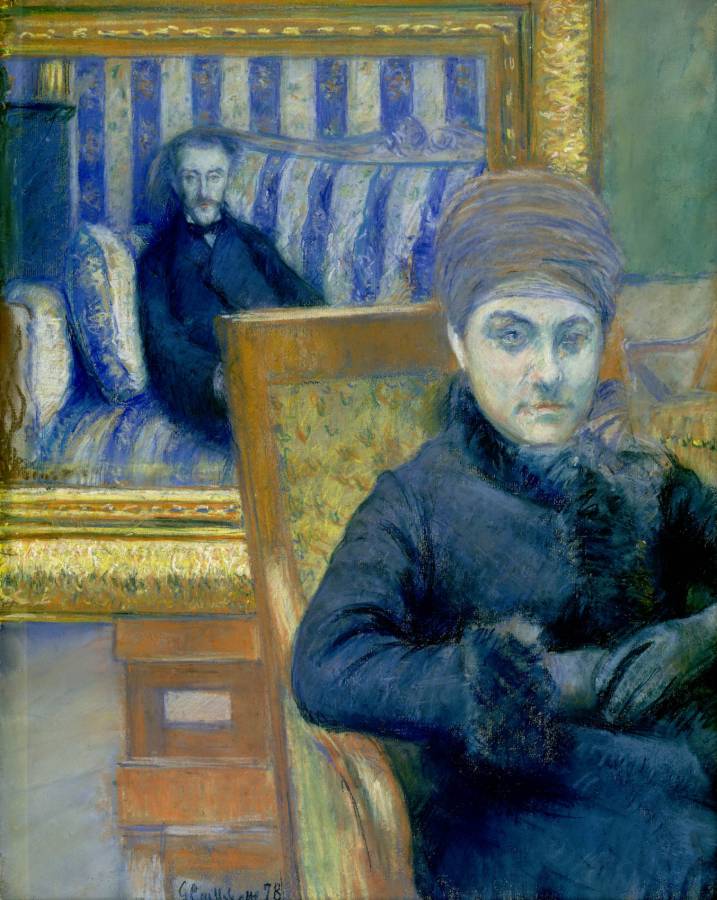Caillebotte, Gustave (1848-1894)
Portrait de Madame X (Portrait of Madame X)
1878
Pastel, 63 x 50 cm
Musée Fabre, Montpellier
A central figure in Impressionism, Caillebotte trained in 1871 in the very academic studio of Léon Bonnat. While he passed the entrance exam to the Paris School of Fine Arts, he frequented Degas who introduced him in 1874 to artists rejected from official Salons: Monet, Renoir and Pissarro. If he did not participate in the first impressionist exhibition at Nadar, he would be present at those of 1876, 1877, 1879 and 1880. Very influenced by his friend Degas with whom, however, he fell out in 1881, he would be the holder of a naturalist art inspired by Courbet and the painter of social reality and modern life (The Parquet Planers, 1875, Musée d’Orsay; Le Pont de l’Europe, 1876, Petit Palais, Geneva). Just as he was passionate about the representation of humanity confronted with the industrial world, he gave numerous portraits and, always like Degas, his style was based on an assiduous practice of drawing.
Exemplary of this taste for the human figure, this portrait is characteristic of the mastery obtained by the artist in the art of pastel. Sitting on an armchair, wearing a hat and gloves as if going out, the woman is placed in the foreground; behind her appears a man in a frame. Is it a portrait hanging on the wall or the reflection of a mirror?
In this depthless space, the composition plays on the asymmetry of the frame and the backrest as well as the divergence of gazes to establish a strange and silent dialogue between the two characters; enigmatic climate where optical markers dissolve while a singular harmony of blue and yellow underlines with strident accents the shift of the scene.
This confusion of perspectives was a recurring theme of research for the Impressionists and reached one of its highest points with Manet‘s Un bar aux Folies Bergères (1882).
Despite real artistic talent, Caillebotte achieved posthumous notoriety not for his painting but thanks to his extraordinary collection of paintings built up with his artist friends. The legacy he left to the State in 1896 was the subject of lively controversy fueled by defenders of academicism. This collection today constitutes the basis of the impressionist collections of the Musée d’Orsay. (FABRE)
